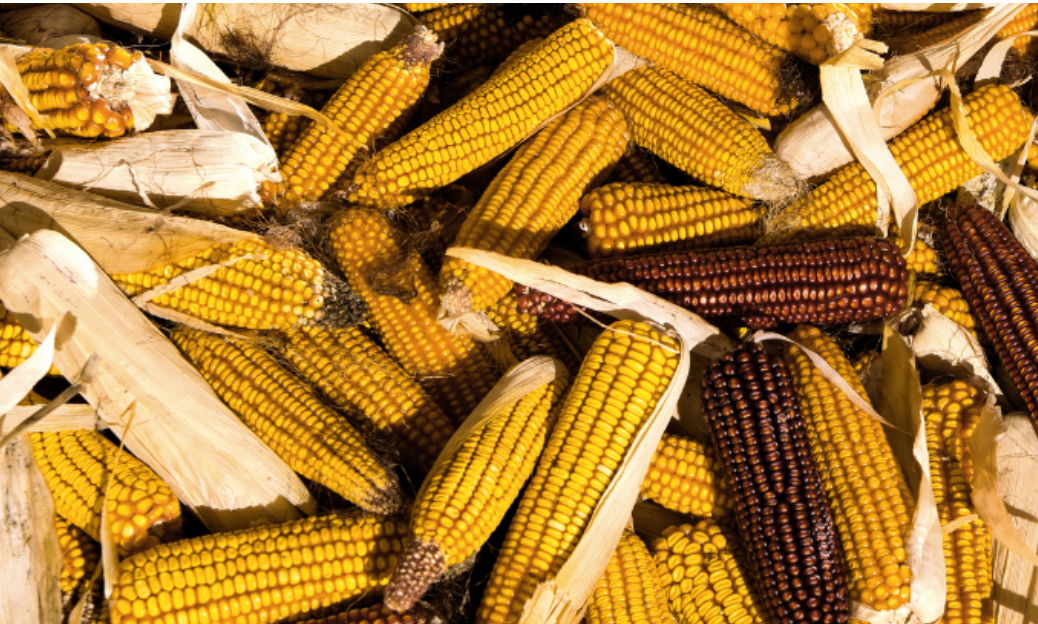Swimming against the tide
IATP | 15 May 2023
Swimming against the tide
by Timothy Wise
Executive summary
Since the beginning of the North American Free Trade Agreement (NAFTA) in 1994, Mexico has experienced a dramatic deterioration in its ability to grow its own food. This has been particularly true for basic grains and meats, foods that flooded Mexico with cheaper exports from the United States after NAFTA eliminated most of the trade restrictions Mexico had used to protect its farmers from foreign competition. Many of those U.S. exports were especially cheap because the U.S., during much of the post-NAFTA period, exported products at prices below what it cost to produce them, one definition of the unfair trade practice known as dumping.
As the Institute for Agriculture and Trade Policy (IATP) has documented, in 16 of the 28 years since NAFTA took effect, the U.S. exported corn, soybeans, wheat, rice and cotton at prices 5-40% below what it cost to produce them. IATP refers to these percentages as dumping margins. With post-NAFTA export volumes of key food crops surging, Mexican producers of these crops saw prices fall precipitously. The foreign competition and low prices dampened Mexico’s domestic production, prompting a steady rise in the country’s dependence on imported foods.
Given their relative importance in Mexican agriculture and diets, corn and wheat are of particular concern. Prior to NAFTA, Mexico was nearly self-sufficient in corn, importing just 7% of its needs. That rose to 30% in 2006-8 under the deluge of cheap imports, and it now stands at 38%. Wheat production has fared even worse, with import dependency rising from 18% before NAFTA to 66% now. Mexico now imports 48% of its grain and oilseed consumption, with just 52% produced in Mexico.
The purpose of this report is to assess how U.S. agricultural dumping of cheap exports has contributed to Mexico’s loss of food self-sufficiency. We focus on the most recent period of agricultural dumping, from 2014 to 2020, when key U.S. crops were exported at below what it cost to produce them, building on a 2009 Tufts University study of the first post-NAFTA wave of dumping, from 1997 to 2005.
The government of Andrés Manuel López Obrador came into office in 2018 vowing to address Mexico’s rising import dependence. "We are going to produce in Mexico what we consume,” promised López Obrador during his campaign. His government has prioritized five key foods — corn, wheat, beans, rice and dairy — with a series of government programs designed to restore some measure of self-sufficiency. Here, we focus on the impact U.S. agricultural dumping has on those staple foods.
We find that:
- After the 1997-2005 period of U.S. dumping, when dumping margins were between 10% and 40%, prices rose with the food-price crisis spurred by the U.S. corn ethanol boom, the 2007-8 financial crisis and a severe drought in 2011. But by 2014 export prices returned to dumping levels, with dumping margins averaging between 6% and 27% through 2020 depending on the crop. Market disruptions from the COVID-19 pandemic and the Russia-Ukraine war raised crop prices in 2021.
- U.S. exports to Mexico have continued to increase in the last 12 years, not at the exponential rates immediately following NAFTA but generally faster than Mexican production has risen. As a result, Mexico’s import dependency for the five priority foods has continued to rise to between 14% and 80%. It has also risen for key meat products.
- U.S. dumping cost Mexican corn and wheat producers nearly $6 billion in lost value for their crops. With U.S. exports of corn and wheat entering Mexico at dumping margins of 10% and 27% respectively from 2014 to 2020, domestic producer prices were lowered by comparable percentages. Collectively, Mexican corn farmers lost $3.8 billion in value for their crop while wheat farmers lost $2.1 billion.
- While the López Obrador administration’s efforts to stimulate domestic production have the potential to reduce import dependency, there is limited evidence through 2022 that they have resulted in significant increases in production. In part, this is due to U.S. dumping in the first two years of the administration, as cheap imports and low prices reduced the incentives for Mexican farmers to increase their output.
- International prices are now relatively high, thanks to pandemic disruptions and the Russia-Ukraine war. This may stimulate increases in domestic production, but previous rises in import dependency leave Mexican importers with very high bills. Corn imports alone cost Mexico nearly $5 billion last year. Since 2000, Mexico’s costs of importing corn, wheat, beans and rice jumped sevenfold in nominal terms, from $979 million to $7.2 billion.
International crop prices are projected to return to low levels in coming years. U.S. agricultural dumping is not a thing of the past: It is a feature of U.S. industrialized agriculture prone to overproduction and below-cost prices to farmers. This is not just bad for Mexican farmers forced into competition with more industrialized U.S. farms. It is bad for U.S. farmers and rural communities, as low prices undermine local economies and leave farmers dependent on an expensive but inefficient set of government subsidies.
In trying to reverse decades of rural neglect and U.S. dumping, the Mexican government is swimming against some very strong tides, currents made only more treacherous by a trade agreement that severely limits what strokes Mexico can employ. Reducing import dependence and increasing domestic production of priority food crops are worthy goals, for a variety of reasons: poverty reduction, rural development, increased resilience to price and supply shocks, greater control over the quality of the food Mexicans consume and even national security.
Trade practices such as agricultural dumping are unfair and are proscribed by a range of international trade agreements. As we show in this report, U.S. dumping undermines Mexico’s legitimate efforts to stimulate domestic production of priority food crops and reduce its dependence on imports.






